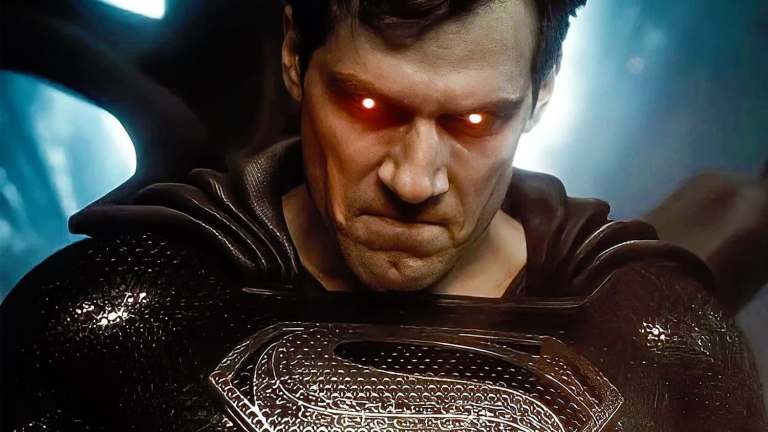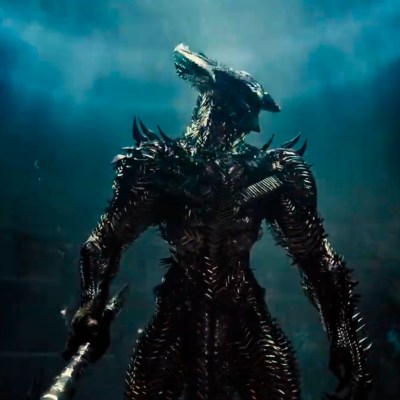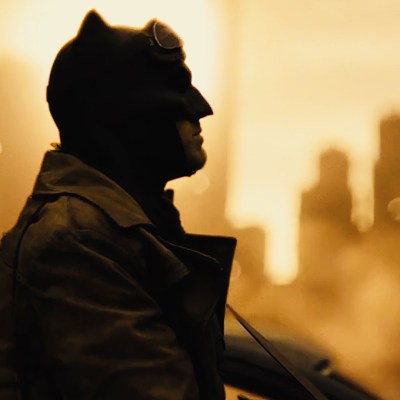Zack Snyder’s Justice League Review
Justice League: The Snyder Cut is a cold and it’s a very broken hallelujah.

When fans gathered beneath the “#ReleaseTheSnyderCut” billboard at San Diego Comic-Con a few years ago, a finished version of Zack Snyder’s Justice League didn’t exist. Sure, there was a rough edit the director kept for his own collection, saving it from Warner Bros. after being effectively replaced by Joss Whedon during reshoots in 2017. But with unfinished effects, no music, and apparently little polish, this version turned out to be a glorified assembly cut which contained everything, plus the kitchen sink. Yet that fact mattered little to fans who demanded more—more movie, more Snyder, and ultimately more content.
Well, Zack Snyder’s Justice League, as it’s now called, is here. And if more content is what you really want, you’re about to be submerged up to your eyeballs in it. With a running time of just over four hours, the Snyder Cut is four minutes longer than Gone with the Wind and nearly 15 minutes lengthier than Lawrence of Arabia. One suspects Snyder hopes this is considered a cinematic epic on that scale. The new version even bizarrely reverts to a square frame, foregoing the widescreen format the film’s shots were originally composed for—and perhaps coincidentally mirroring recent arthouse darlings like The Lighthouse and First Cow.
But these details are simple affectations, the pretensions of a filmmaker who is otherwise making no hard choices about the excess of comic book gibberish he’s assembled. And for all its now (mostly) finished CG and numbing slow-motion, this still very much is gibberish: a movie that mistakes ponderousness for poignancy, and which remains an assembly cut so rough you’d be forgiven for wondering if anything was left on the cutting room floor. Despite its cinematic airs, this has ironically become bona fide streaming service content, the kind that’s as undercooked or unwieldy as anything else greenlit solely in fealty to an algorithm.
Picking up where Batman v Superman Dawn of Justice left off, Zack Snyder’s Justice League is at heart the same dopey story as the theatrical cut. Following Superman’s death, “the bell has been rung” and a computer-generated behemoth named Steppenwolf—now with a lot more spikes on his armor and a gravellier voice courtesy of Ciarán Hinds—has arrived on Earth to retrieve three “Mother Boxes.”
In spite of that Saturday morning cartoon setup, these elements are unspooled at a glacial pace and with a funereal self-seriousness as Batman (Ben Affleck) and Wonder Woman (Gal Gadot) recruit a team of superheroes. The newcomers include Barry Allen/The Flash (Ezra Miller), Arthur Curry/Aquaman (Jason Momoa), and perhaps most importantly Victor Stone/Cyborg (Ray Fisher). Together they will brood, recite copious amounts of exposition, and eventually resurrect Clark Kent (Henry Cavill) from the dead. Also they’ll tease an armada of sequels featuring far off aliens, and heavily foreshadowed betrayals, that will never come to anything.
As a finished product, the most interesting thing about Zack Snyder’s Justice League is how it contrasts with the studio-approved version rushed into theaters by Whedon. While effectively the same story, Snyder’s version is the more satisfying iteration, if only because it’s so purely Zack Snyder. It is also a noticeable step up from Batman v Superman thanks to concessions made at the beginning of the Justice League‘s production. Gone is the pseudo-intellectual dialogue about gods and character motivations that better resemble Philosophy 101 term papers.
Nevertheless, we again have a film in which the heroes spend as much time posing for some unseen sculptor as they do interacting with one another, and the protagonists still have a uniformly glum outlook on humanity. Superman remains an ambiguous presence (if not outright insidious at times), and Batman again enjoys blowing holes in his enemies (now with digital blood!), although they’re Parademons instead of human beings this time.
All that said, this is wholly Snyder’s vision played to the hilt, with the filmmaker occasionally finding his peculiar brand of grace notes, such as when he puts Nick Cave’s “There is a Kingdom” over an Aquaman swim. By contrast, the “Whedon Cut” is further revealed for the Frankenstein’s Monster it is—a patchwork of unfinished ideas stitched together on the proverbial slab of a studio committee’s table. There are elements that work much better here. For example, Lois Lane’s grief over losing Clark Kent. And there are others that don’t, such as Batman’s mentoring of the Flash (gone is the “save one” speech).
But taken as a whole, this is a piece with Snyder’s Batman v Superman and Man of Steel, and his insistent grandiloquence can at times be charming in its stony-faced earnestness, if still also exhausting.
Perhaps the characters who are best served by the extended edition are the hero Cyborg and the villain Steppenwolf. The former was reduced to a handful of clichés in the theatrical version. Here Ray Fisher gets a lot more screen time and is good in all of it. New flashback scenes still stumble at making the character fully compelling, but Fisher at least depicts a complete arc across the four hours. None of his other teammates can say that.
Meanwhile Steppenwolf is given a discernable motivation for retrieving Mother Boxes, even if it essentially transforms him into a middle management baddie in the process—the supervillain equivalent of a parking valet waiting on the off-screen Darkseid. Indeed, the latter appears briefly as a CGI brute who’s built up to like Sauron from Lord of the Rings, even as he comes across closer to a mindless Cave Troll in his first big scene.
Darkseid is eventually given a fuller texture as the film shambles along, but then that might be the biggest problem of this iteration of Justice League: the amount of time it takes to get anywhere. Divided into seven chapters, complete with title cards, Zack Snyder’s Justice League is structured, and more frustratingly paced, like a television series. If it had been released in that medium, then more power to HBO Max. But the refusal to make any attempts to wrangle the material down to even three hours means a full 68 minutes will go by before the Flash is introduced, and hours will pass before supporting characters reappear. It gives the proceedings a listless, meandering quality, and that includes the action sequences.
In the end, Justice League 2.0 breaks the cardinal sin of not committing to anything while indulging everything. Even its new scenes from Snyder’s own reshoots last year (you’ll know them when you see them) add nothing to the overall film other than gratifying the director’s worst impulses, which are now unburdened from the restraints of logic or cohesive storytelling.
For the most devoted disciples, moments like Justice League’s new, inexplicable epilogue will be treated like scripture, which is fine. To everyone else though, know that Zack Snyder’s Justice League is a cold and it’s a very broken hallelujah.
Zack Snyder’s Justice League premieres on HBO Max on Thursday, March 18.


